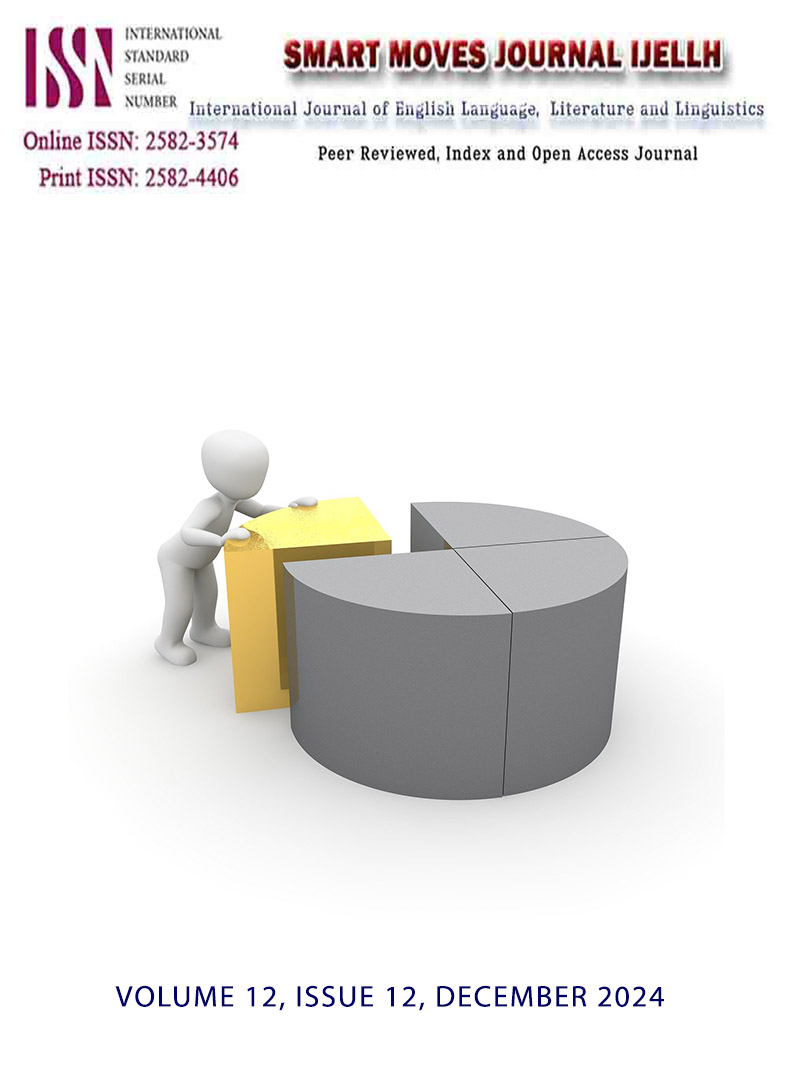Examining Semiotic Structures and Their Impact on Translation Equivalence in Media: A Cross-Cultural Analysis of India and the West
DOI:
https://doi.org/10.24113/ijellh.v12i12.11516Keywords:
Semiotic Structures, Translation Equivalence, Media Localisation, Cross-Cultural Analysis, Indian Culture, Western Culture, National Education PolicyAbstract
The paper deals with the complex relationship of semiotic structures and translation equivalence pertaining to media localisation, and it attempts to explore the same within the framework provided by the National Education Policy, 2020, in India. A semiotic analysis of the film "PK" or any other movie will reveal how signs, codes, and conventions can carry meaning to the audience. For example, the use of the alien character to criticise human customs is used metaphorically in the context of commenting about societal norms. With a focus on Indian and Western cultural contexts, this study examines the relationship between semiotic structures and translation equivalency in media localization. The study explores the difficulties of maintaining cultural meaning in translation and is based on India's National Education Policy (NEP) 2020, which promotes multilingual education and cultural inclusion. It argues how the semiotic properties of language in media discourse shape the reception and understanding of translated texts in various language and cultural communities, with special emphasis on NEP 2020.
This is some critical work towards the realisation of NEP 2020, which has been insistent on multilingual education and cultural diversity. Culture and language become even more important with NEP; it promotes even the first language as one of the tools to learn through and continues insisting on local languages in educational and media contexts. It advocates that NEP should be the basis of translation in local media content. The calls for localisation within the NEP framework, paying attention to semiotic depth with the source text, and guaranteeing literal and dynamic equivalence in the target text.
The NEP 2020 promotes multilingualism as an inclusive strategy by highlighting the use of regional languages and cultural symbols in media and education. To preserve the core of Indian semiotics, media translation within this framework necessitates cultural sensitivity and depth. Drawing on examples from localised educational media, the paper now proceeds with a number of case studies specifically dealing with the problems and strategies for dealing with semiotic complexity in the creation of contextually relevant and culturally specific translations. The results of the current work show that if the semiotic level is allowed to dominate, this will result in linguistic correctness at the expense of the interpretative/semantic level, thus limiting communication and interaction.
In other words, this research on semiotic structures in translation practice under web media conditions is a detailed and situational recognition of the structural necessity that translators and localizers are to be aware of such dynamics.
Downloads
References
Barthes, R. (1977). Barthes, R.(1977). Image, music, text.(S. Heath, Ed.) The Journal of Aesthetics and Art Criticism (Vol. 37, p. 220). Hill and Wang. doi: 10.2307/429854Image, music, text.
Chandler, D. (2022). Semiotics: the basics. Routledge.
Paganopoulos, M. (2013). The Changing World of Satyajit Ray: Reflections on Anthropology and History. Media Watch, 4(1), 4-27.
Eco, U. (1976). A Theory of Semiotics. Indiana University Press.
Goffman, E. (1959). The Presentation of Self in Everyday Life. Anchor Books.
Hall, S. (1997). Representation: Cultural Representations and Signifying Practices. Sage Publications.
Hofstede, G. (2001). Culture’s Consequences: Comparing Values, Behaviors, Institutions and Organisations Across Nations. Sage Publications.
Jakobson, R. (1959). “On Linguistic Aspects of Translation.” In R. A. Brower (Ed.), On Translation (pp. 232-239). Harvard University Press.
Kumar, A. (2010). “Translating Cultural Codes: A Study of ‘Lagaan’.” Journal of Indian Cinema Studies, 12(3), 45-67.
Lefevere, A. (1992). Translation, Rewriting, and the Manipulation of Literary Fame. Routledge.
Nida, E. A. (1964). Toward a Science of Translating. E.J. Brill.
Niranjana, T. (1992). Siting Translation: History, Post-Structuralism, and the Colonial Context. University of California Press.
Rajadhyaksha, A. (2014). Indian Cinema in the Time of Celluloid: From Bollywood to the Emergency. Indiana University Press.
Ray, S. (2020). Pather Panchali: The Film and Its Cultural Significance. Oxford University Press.
Said, E. (1978). Orientalism. Pantheon Books.
Venuti, L. (2008). The Translator’s Invisibility: A History of Translation. Routledge.
Venuti, L. (2017). The Translator’s Invisibility: A History of Translation. Routledge.
Downloads
Published
How to Cite
Issue
Section
License
Copyright (c) 2024 Shreya Pandey

This work is licensed under a Creative Commons Attribution 4.0 International License.
https://creativecommons.org/licenses/by/4.0/



